





A corky tree: can you guess which one
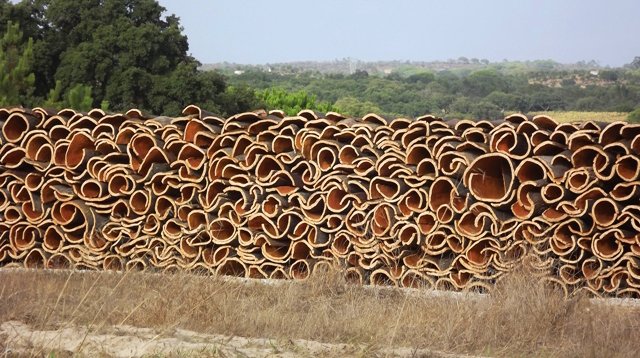
Yes, Quercus suber, known as 'cork oak' is a rather peculiar tree which I would like to introduce to you, whether you enjoy a glass of good Chardonnay every once in a while or are just fond of botany and culture. I spent a few days roaming across Portugal recently and soon enough spotted those trees growing by the side of every small road in the country, of course I had my wife stopping the car right on the spot and I rushed out with my camera.
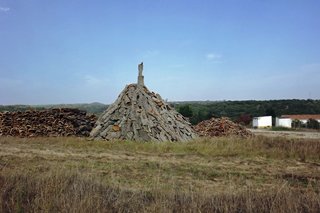
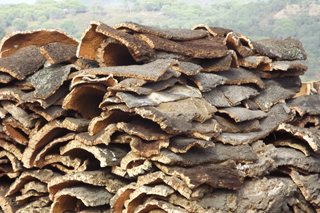
So let us get more familiar with this tree. It belongs to the botanical family named Fagaceae (formerly Cupuliferaceae) which is rather large as it numbers more than 900 species found worldwide, except in tropical and Southern Africa. This family is divided into 9 to 10 generas among which the best known are Castanea, Fagus and Quercus which respectively refer to familiar trees such as chestnut, beech and oak. Trees from this family appeared during the Cretaceous period, some 90 million years ago, therefore they show archaic features such as type 2 or 3 flowers, side or basal fertilization by the pollen tube and so forth. The oak genera (Quercus) itself numbers about 600 different species, much more than what most people would think. They are mostly found in temperate to subtropical parts of the Northern hemisphere with a few species in Indonesia and high altitude tropical forests. Trees are either deciduous or evergreen, depending on the climatic zone they grow.
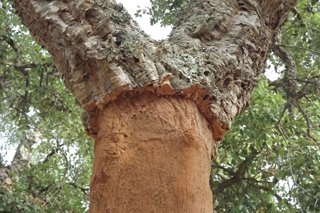
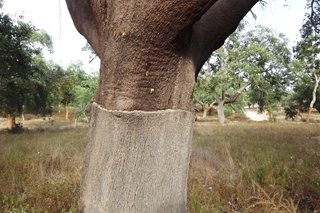
The cork oak itself originates in Northern Africa, more precisely the coastal areas of what are now Morocco, Algeria, Tunisia and Libya. It has been acclimatized to other places in the Mediterranean and is now commercially grown in Northern Africa, Italy, France, Spain and of course Portugal. This last country is actually the number one producer of cork with more than half the world yearly production of 340,000 tons. Spain comes in second, followed by Morocco and Algeria. Tunisia, Italy and France each have a very small yield.
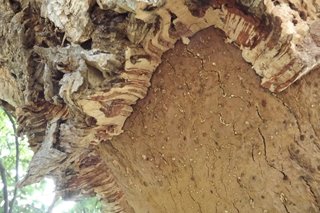
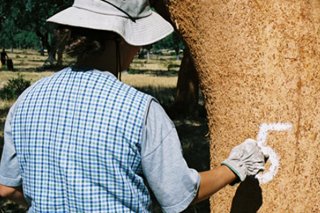
This tree can grow to 20 or 25 meters high (the largest recorded specimen was 45m!) but it usually stays at a more modest 12 to 15 m. The small leaves are coriaceous and spiny (an adaptation to coarse growing conditions) and have a lifespan of two to three years. The tree itself usually lives 150 to 200 years but can even reach several centuries. The small yellow flowers are rather inconspicuous as for other members of the Fagaceae family, male and female flowers are distinct but found on the same tree. The fruits which follow are acorns like for other oak trees and have insect repelling properties. It grows in very poor soils, stony and dry ones, windy and sunny, the only fussiness it allows itself regard the soil pH ; it is strictly attached to acid soils, calcareous ones are a deterrent and neither will it take salty soils. Propagation is done by sowing the ripe acorns, then one has plenty time to get busy elsewhere as the tree will not be ready for harvest before 25 years, when it will reach about 70 cm in circumference.
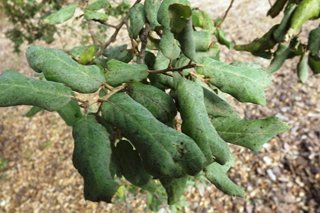
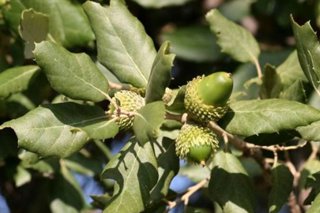
The specific part is of course the bark which can reach an amazing 25cm (almost a foot!) thickness. If left to itself the plant will produce what is called "male bark," a rather poor quality thing with many cracks but once there is a first harvest it will regrow a much thicker and better quality stuff called "female bark" which has high commercial value. Then the bark will slowly regrow and be harvested again every 9 to 15 years when it is at least 3cm thick. The harvest is done on the trunk and main boughs, starting in May and June and ending in and August when the sap flow is important. One has to be delicate so as not to injure the living part where the elaborated sap flows (the phloem) while being strong enough to get the bark off. This thick cork is an adaptation against fires, it protects the sapwood from burning so the tree can stay alive even after serious fires, the exact same strategy used by giants conifers of North-Western USA, the red-wood (Sequoia spp.) which are able to grow an amazing blaze-shield 60cm (2 feet) thick.
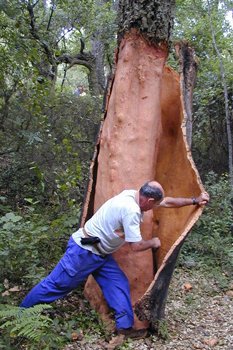 The cork is used of course to close tightly wine and Champagne bottles though more and more wine factories now turn to plastic stoppers, a complete heresy for real wine enthusiasts. Other uses take advantage of the high insulation power of this material ; it is light, easy to work and makes an effective noise attenuator. The timber is of very high quality (it is an oak tree after all!), very hard, with a high density, perfect for carpentry and cabinetwork as well as excellent firewood, it has been much put to use by ship builders during the great old days of Portuguese navy which made much discoveries in America, Africa and Asia during the XVth and XVIth centuries. Cork oak trees forests in Portugal are home to to endangered animal species, the Iberian lynx (Lynx pardinus) and Eastern imperial eagle (Aquila heliaca), two impressive sights when you have a chance to see them.
The cork is used of course to close tightly wine and Champagne bottles though more and more wine factories now turn to plastic stoppers, a complete heresy for real wine enthusiasts. Other uses take advantage of the high insulation power of this material ; it is light, easy to work and makes an effective noise attenuator. The timber is of very high quality (it is an oak tree after all!), very hard, with a high density, perfect for carpentry and cabinetwork as well as excellent firewood, it has been much put to use by ship builders during the great old days of Portuguese navy which made much discoveries in America, Africa and Asia during the XVth and XVIth centuries. Cork oak trees forests in Portugal are home to to endangered animal species, the Iberian lynx (Lynx pardinus) and Eastern imperial eagle (Aquila heliaca), two impressive sights when you have a chance to see them.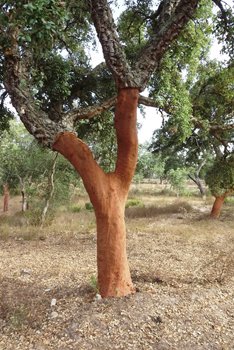
I now suggest that we get out of the forest and have a rest in a small village where we may even order a bottle of local vinho verde ("green wine") just to make sure the cork used on it is a genuine one, of course!
Copyright © www.100flowers.win Botanic Garden All Rights Reserved